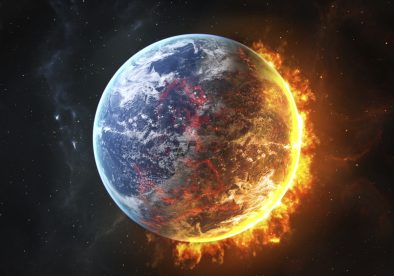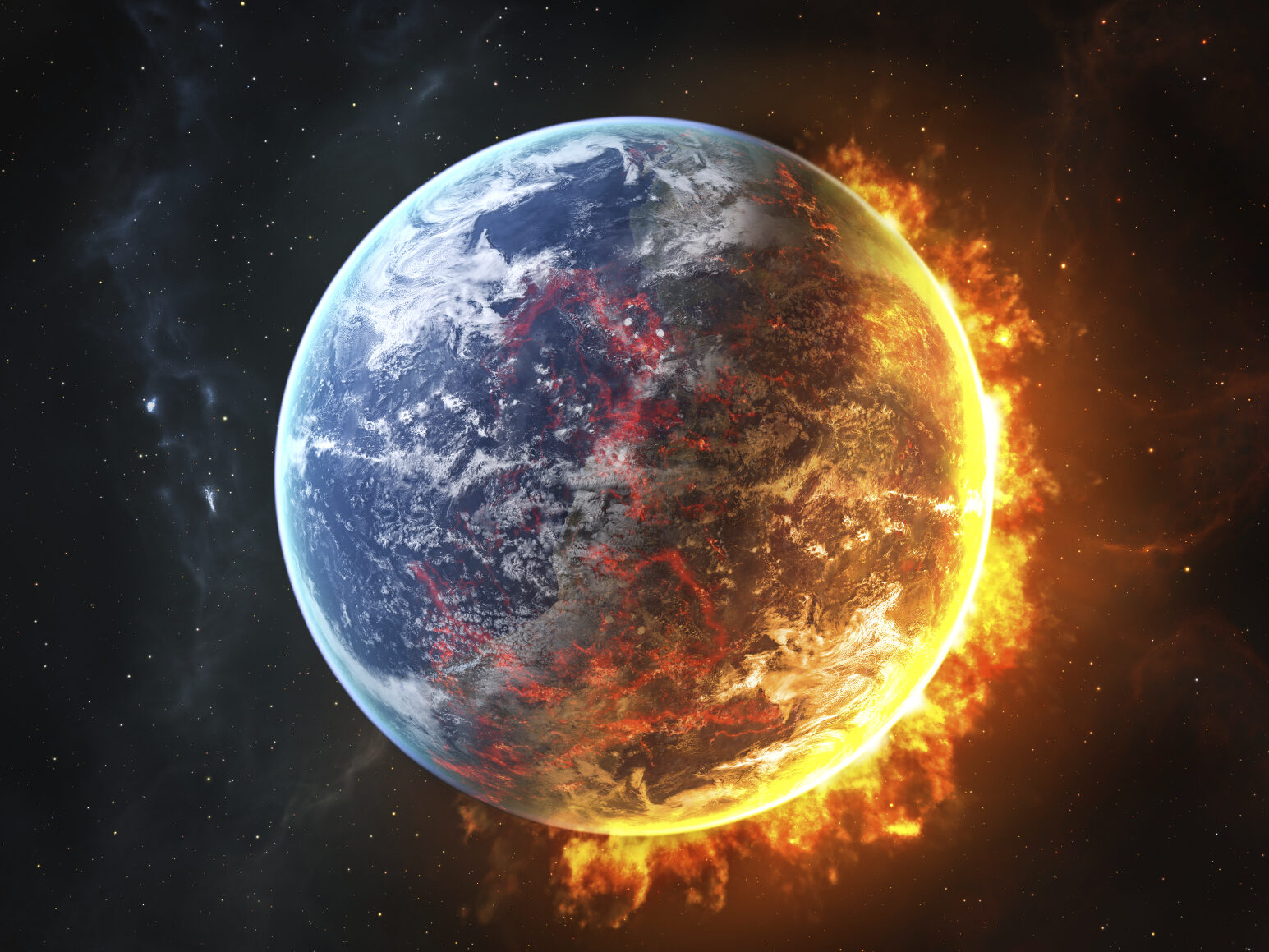Themes of environmental disaster and climate change support a lot of the action in Horizon, so let’s get one thing out of the way upfront. Anyone who still believes the jury is out as to whether humanity is having a lasting and negative effect on Earth’s climate is plain wrong. That rocket left the launch-pad long ago.
One of the primary aims of science fiction is to interrogate what’s happening right now, and one of the methods it uses is to project current effects and trends into the future.
In the world of my novel, humanity failed to rise to the challenge of climate change — just as it appears to be doing now — and we almost lost everything. It was only when a hurricane event driven by global warming laid waste to much of the eastern seaboard of the United States of America that a unified, global political action managed to make a positive change, retooling industry and ending our reliance on fossil fuels. But many millions lost their lives before that happened. I hope the reality is a lot less grim.
The thing is, on a geological scale, environments also change without the ‘help’ of humanity. Europe enjoyed a significantly warmer period from 900–1300 CE thanks to an unusually strong North Atlantic Oscillation, and between 1350–1850 the Little Ice Age chilled parts of the northern hemisphere, causing — as one example — the Great Frost of 1709, which saw Venetian lagoons freeze over and fish die off in English rivers. Paris enjoyed temperatures of -15 degrees centigrade for fourteen days in January of that year.
So while ‘man-made’ effects on Earth drove climate degradation, on the world of Horizon, I wanted to explore the effects the natural system has on weather and climate.
On approaching Horizon, the crew observe a massive hurricane over the ocean. In fact it’s more accurately a ‘hypercane’. Hurricane Sandy in 2012 reached Category 3 (the highest category) when it made landfall in Cuba. That equates to sustained winds of 178–208 Km/h. Hurricane Sandy is peanuts to what’s happening on Horizon.
‘Sensors operational,’ Nadira said. ‘Full spectrum.’
‘I have two bots in the tube,’ Lex said. ‘Launching at your discretion.’
‘Launch bots,’ Cait ordered, and the hull rang with their leaving. She watched the shrinking flare of their engines as they arced together towards Horizon and then split, one heading for daylight while the other streaked towards the terminator and the waiting storm.
She pulled off the data helmet and stowed it below her acceleration couch, and concentrated on the screens overhead. The left showed white cloud blurring past, the image brightening and darkening as the bot plunged through thicker concentrations. The right-hand image was breathtaking. The moon was directly over the storm now, and as the bot scudded closer, the top of the spiralling vortex was picked out in greys, silvers and whites. It turned majestically around the dark central eye in a stately ballet that belied the violence beneath.
‘Bot One to automatic overflight. Levelling Bot Two at seven kilometres above sea level,’ Lex said, leaning on the control panel next to his couch. ‘I’ll bring her in over the eye.’
Nadira shifted in her seat to view the telemetry coming in. Cait craned her neck around as she heard the geophysicist take a sharp breath.
‘Doppler’s showing sustained surface winds of over three hundred kilometres per hour,’ she said, her voice almost a whisper. ‘There are close to forty convective storms in the main body.’ She looked up at Cait. ‘We have to get closer to the surface.’
‘Closer!’ Lex barked a short laugh. ‘I know this is an interesting phenomenon, but we don’t have an unlimited supply of bots, and they’re not designed to withstand three-hundred-kilometre winds.’
‘It’s calm in the eye,’ Nadira said. ‘You won’t encounter any turbulence as long as you steer clear of the eye wall. You can manage that, can’t you?’
The problem with hurricanes is that they kick a lot of water vapour into the upper atmosphere. Water vapour is a strong greenhouse promoter because it absorbs heat that would otherwise be radiated out into space, so the planet is becoming hotter as a result. Of course hurricanes generally blow themselves out after a while but this one keeps regenerating because of unusually high ocean surface temperatures, which — well, I can’t say too much about right now.
Horizon is Earth-like when my crew of stellarnauts arrives there, but may not remain so. Certainly our own planet used to be deadly to human life. Up to about 2.4 billion years ago our atmosphere had very little oxygen and was predominantly nitrogen, carbon dioxide and methane. It was only due to the rise of a cyanobacteria capable of consuming carbon dioxide and water and ‘excreting’ oxygen that the atmosphere slowly became able to support air-breathing life.
On Horizon, that trend seems to be working in reverse. But news from Earth means the crew have to confront an ethical dilemma: when is it okay to tamper with the natural development of an extraterrestrial environment? As scientists, the crew are there to observe, not to interfere. But Earth is in the grip of a new disaster, despite our success in halting climate degradation, and asks for help. What the crew discovers on Horizon makes it far from certain that help is possible.
Picture credit:“Staring down a hurricane” by Astro_Alex is licensed under CC BY-SA 2.0 .


